
Advances in Rehabilitation Science and Practice
Scope & Guideline
Bridging Research and Practice for Better Patient Outcomes
Introduction
Aims and Scopes
- Patient-Centered Rehabilitation Research:
The journal emphasizes research that explores the experiences and perceptions of patients undergoing rehabilitation, contributing to a better understanding of their needs and outcomes. - Intervention Efficacy and Feasibility Studies:
A significant focus is placed on exploring the effectiveness and feasibility of various rehabilitation interventions, including novel techniques and technologies. - Cross-Cultural and Psychometric Evaluations:
The journal includes studies that validate assessment tools and questionnaires across different cultural contexts, ensuring that rehabilitation practices are inclusive and effective for diverse populations. - Health Policy and Systems Research:
It also addresses the importance of health policy in rehabilitation, advocating for research that strengthens health systems and improves access to rehabilitation services. - Innovative Methodologies in Rehabilitation Science:
The journal encourages the use of innovative methodologies, including qualitative research and systematic reviews, to advance the field of rehabilitation science.
Trending and Emerging
- Digital Health and Technology in Rehabilitation:
There is an increasing focus on the use of digital health technologies, such as virtual reality and telehealth, to enhance rehabilitation practices and patient engagement. - Post-Viral Conditions and Long COVID:
Research addressing post-viral rehabilitation, particularly concerning Long COVID, has gained prominence, highlighting the need for specialized rehabilitation strategies for individuals recovering from COVID-19. - Qualitative Research on Patient Experiences:
An emerging trend is the emphasis on qualitative research that captures the lived experiences of patients, particularly in relation to complex conditions such as stroke and amputations. - Rehabilitation for Specific Populations:
There is a growing interest in tailored rehabilitation approaches for specific populations, including stroke survivors, individuals with multiple sclerosis, and those with cognitive impairments. - Interdisciplinary Approaches to Rehabilitation:
The journal is increasingly featuring studies that adopt interdisciplinary methodologies, integrating insights from various fields to address rehabilitation challenges comprehensively.
Declining or Waning
- Traditional Rehabilitation Techniques:
Research focused on conventional rehabilitation techniques appears to be declining, as there is a growing interest in innovative and technology-driven interventions. - Generalized Pain Management Approaches:
Studies that discuss generalized pain management strategies without a specific focus on rehabilitation outcomes are less frequently published, indicating a shift towards more tailored and condition-specific approaches. - Non-Evidence-Based Practices:
There is a noticeable decline in the publication of papers that do not adhere to rigorous evidence-based practices, as the journal increasingly prioritizes high-quality, data-driven research. - Basic Descriptive Studies:
The prevalence of basic descriptive studies that do not contribute to theoretical or practical advancements in rehabilitation is decreasing, as the journal seeks more impactful and innovative research. - Aging and Rehabilitation Without Specific Focus:
Research on aging-related rehabilitation issues without a specific intervention or outcome focus has seen a decline, suggesting a move towards more targeted studies that address specific rehabilitation challenges faced by older adults.
Similar Journals
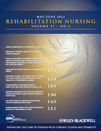
Rehabilitation Nursing
Shaping the future of rehabilitation through scholarly excellence.Rehabilitation Nursing, published by Lippincott Williams & Wilkins, is an esteemed journal dedicated to advancing the fields of rehabilitation, nursing, and physical therapy. With an ISSN of 0278-4807 and an E-ISSN of 2048-7940, this journal has been a crucial resource for practitioners and researchers since its inception in 1975, continuously providing insights through its convergence of scholarship up to 2024. As a member of the Q3 category in multiple disciplines, including Medicine (Miscellaneous), Nursing (Miscellaneous), and Physical Therapy, the journal affirms its relevance within the academic community, particularly highlighted by its Scopus rankings. With a focus on disseminating innovative research, clinical findings, and evidence-based practices, Rehabilitation Nursing aims to enhance patient care and foster improvements in rehabilitation strategies. Whether one seeks to stay abreast of the latest developments or contribute new insights, this journal is a must-read for those involved in the fields of rehabilitation and nursing.
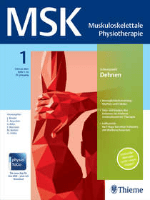
MSKMuskuloskelettale Physiotherapie
Connecting ideas and innovations in the field of physiotherapy.MSK Muskuloskelettale Physiotherapie is a leading academic journal dedicated to the field of musculoskeletal physiotherapy, exploring innovative practices, research findings, and clinical advancements. Published by GEORG THIEME VERLAG KG, a reputable name in medical publishing, this journal aims to serve as a vital resource for professionals, researchers, and students alike who are passionate about enhancing patient care and therapeutic techniques within the musculoskeletal domain. With its commitment to open access, MSK Muskuloskelettale Physiotherapie ensures that cutting-edge research is readily available to a global audience, facilitating the exchange of ideas and fostering collaboration across disciplines. As the field evolves, this journal seeks to provide a comprehensive platform for the latest developments, emerging methodologies, and transformative insights that are essential for advancing knowledge and practice in musculoskeletal health.
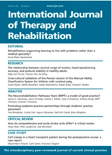
International Journal of Therapy and Rehabilitation
Empowering Practitioners Through Cutting-Edge ResearchInternational Journal of Therapy and Rehabilitation (ISSN: 1741-1645; E-ISSN: 1759-779X), published by MA HEALTHCARE LTD, is a premier platform for disseminating innovative research and clinical practices in the fields of physical therapy, sports therapy, and rehabilitation. As an influential contributor to the academic discourse in rehabilitation, this journal holds a notable impact factor and is recognized in the Q4 category in Physical Therapy, Sports Therapy and Rehabilitation and Q3 in Rehabilitation as of 2023. With rankings of #112 out of 161 and #190 out of 247 in Scopus, respectively, it remains committed to publishing high-quality research that addresses both the fundamental and contemporary challenges in therapy and rehabilitation. While the journal does not offer open access, it strives to present content that is highly relevant and impactful for practitioners, researchers, and students in the healthcare community. The journal's scope, spanning from 1996 to 2024, reflects its dedication to reflecting the evolving nature of therapy and rehabilitation practices globally.
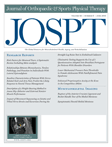
JOURNAL OF ORTHOPAEDIC & SPORTS PHYSICAL THERAPY
Exploring the Intersection of Science and Sports RehabilitationJOURNAL OF ORTHOPAEDIC & SPORTS PHYSICAL THERAPY (JOSPT), published by J O S P T, is a premier peer-reviewed journal that has made significant contributions to the fields of orthopaedic and sports physical therapy since its inception in 1979. With an impressive impact factor and consistently ranking in the Q1 category for Medicine, Physical Therapy, Sports Therapy and Rehabilitation, and Sports Science in 2023, this journal stands at the forefront of evidence-based practice and innovative research. JOSPT aims to disseminate high-quality investigations, systematic reviews, and groundbreaking clinical practices that enhance both rehabilitation techniques and athletic performance. Notably, it ranks #12 among 247 in the Scopus database for Health Professions related to Physical Therapy, reflecting its influence and recognition within the academic community. As a comprehensive resource for researchers, clinicians, and students alike, JOSPT facilitates access to the latest developments in physical therapy, thereby promoting improved patient outcomes and advancing the science of rehabilitation.
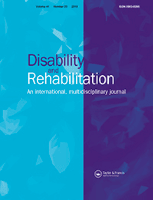
DISABILITY AND REHABILITATION
Shaping the Future of Rehabilitation Through Rigorous Scholarship.Disability and Rehabilitation, a prestigious journal published by Taylor & Francis Ltd, plays a critical role in the field of rehabilitation science. Since its inception in 1978, this journal has been dedicated to presenting high-quality research focused on improving the lives of individuals with disabilities through innovative rehabilitation techniques and healthcare solutions. With an impressive Q1 ranking in the Rehabilitation category and a Scopus rank of #24 out of 161, the journal is recognized for its significant impact and rigorous scholarly contributions, boasting an 85th percentile performance among peers. Although it operates under a subscription model, the journal remains a vital resource for researchers, healthcare professionals, and students seeking the latest insights and developments in the realm of disability and rehabilitation. Covering a broad spectrum of topics, from clinical practices to theoretical advancements, Disability and Rehabilitation continues to shape the future of rehabilitation research and practice worldwide.

Archives of Rehabilitation Research and Clinical Translation
Unlocking Potential: Research That Transforms RehabilitationArchives of Rehabilitation Research and Clinical Translation, published by ELSEVIER, is a leading open access journal dedicated to advancing the field of rehabilitation research and clinical practice. Since its inception in 2019, the journal has made significant contributions to the understanding of rehabilitation methodologies and interventions, showcasing innovative research that bridges the gap between clinical practices and rehabilitation science. With an impressive impact factor and essential Scopus rankings—#56 in Rehabilitation Medicine and #94 in Physical Therapy—this journal is highly regarded in its fields and reaches a diverse international audience. The open access format promotes widespread dissemination of scholarly work, ensuring that vital research findings are accessible to all practitioners, researchers, and students worldwide. As a trusted platform for high-quality research, the journal encourages rigorous scientific exploration and fosters collaboration among professionals striving to improve the quality of rehabilitation services.
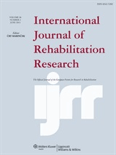
INTERNATIONAL JOURNAL OF REHABILITATION RESEARCH
Connecting research and practice to enhance rehabilitation strategies.INTERNATIONAL JOURNAL OF REHABILITATION RESEARCH, published by Lippincott Williams & Wilkins, stands as a vital resource within the fields of rehabilitation and physical therapy. With an ISSN of 0342-5282 and an E-ISSN of 1473-5660, this peer-reviewed journal has been disseminating groundbreaking research since its inception in 1978. As of 2023, it holds commendable rankings with a Q3 in Medicine (miscellaneous) and Q2 in both Physical Therapy, Sports Therapy, and Rehabilitation, as well as Rehabilitation, highlighting its significant contribution to these disciplines. The journal seeks to advance knowledge and practice in rehabilitation by serving as a platform for high-quality research, clinical studies, and theoretical discussions. It is particularly valuable for researchers, healthcare professionals, and students aiming to stay at the forefront of rehabilitation science and practice. Although not designated as open access, the journal remains accessible through various academic databases, ensuring that its content reaches a broad audience committed to improving rehabilitation therapies and outcomes.

European Journal of Physical and Rehabilitation Medicine
Connecting Communities: Global Insights in Physical and Rehabilitation MedicineWelcome to the European Journal of Physical and Rehabilitation Medicine, the premier peer-reviewed journal focusing on advancements in the fields of physical therapy, sports therapy, and rehabilitation. Published by EDIZIONI MINERVA MEDICA, this journal has established itself as a leading resource since its inception in 2008, now enjoying an impressive Q1 ranking in these disciplines according to 2023 metrics. With an emphasis on rigorous research and innovative clinical practice, the journal facilitates the dissemination of high-quality, evidence-based studies, contributing to the enhancement of patient care and therapeutic strategies. As an Open Access platform since 2022, the journal widens its reach, enabling researchers, clinicians, and students across the globe to access valuable insights without barriers. Residing in Italy, the journal's focus transcends regional confines, engaging a vibrant international community aimed at improving rehabilitation outcomes. Join us in exploring the latest developments that shape the future of rehabilitation sciences.
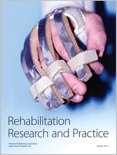
Rehabilitation Research and Practice
Advancing Rehabilitation Through Innovative Research.Rehabilitation Research and Practice is a distinguished open-access journal published by HINDAWI LTD, dedicated to advancing knowledge in the fields of rehabilitation, physical therapy, and sports therapy. With its ISSN 2090-2867 and E-ISSN 2090-2875, the journal has been a pivotal resource for researchers and practitioners since its inception in 2010. Based in Egypt and reaching an international audience, the journal encapsulates cutting-edge research and evidence-based practices that significantly contribute to patient care and rehabilitation strategies. Notably, it holds a reputable position in the Scopus rankings—42nd out of 161 in Medicine Rehabilitation and 74th out of 247 in Health Professions. The journal enjoys a Q2 status in the 2023 category quartiles, reflecting its influence and quality within the academic community. The journal's commitment to an open-access format not only enhances its visibility and accessibility but also fosters collaboration among professionals, making it an indispensable resource for anyone engaged in rehabilitation research and practice.

Annals of Physical and Rehabilitation Medicine
Shaping the Future of Rehabilitation with Impactful ResearchAnnals of Physical and Rehabilitation Medicine, published by Elsevier France-Editions Scientifiques Medicales Elsevier, stands as a leading peer-reviewed journal in the fields of Orthopedics and Rehabilitation. With its ISSN 1877-0657 and E-ISSN 1877-0665, this esteemed journal is known for its high-quality research articles that significantly influence clinical practices and advancements in rehabilitation medicine. Recognized for its impact, the journal is categorized in the Q1 quartiles for both Orthopedics and Sports Medicine as well as Rehabilitation disciplines. According to the Scopus rankings, it ranks #5 out of 161 in Rehabilitation and #20 out of 321 in Orthopedics and Sports Medicine, illustrating its critical role in shaping the future of these fields with a remarkable 97th and 93rd percentile standing respectively. With a commitment to excellence, the journal publishes innovative research that addresses the evolving needs of both practitioners and patients, making it an essential resource for researchers, professionals, and students dedicated to improving rehabilitation practices. The journal operates under conventional access options, ensuring that its groundbreaking findings remain accessible to a wide audience.